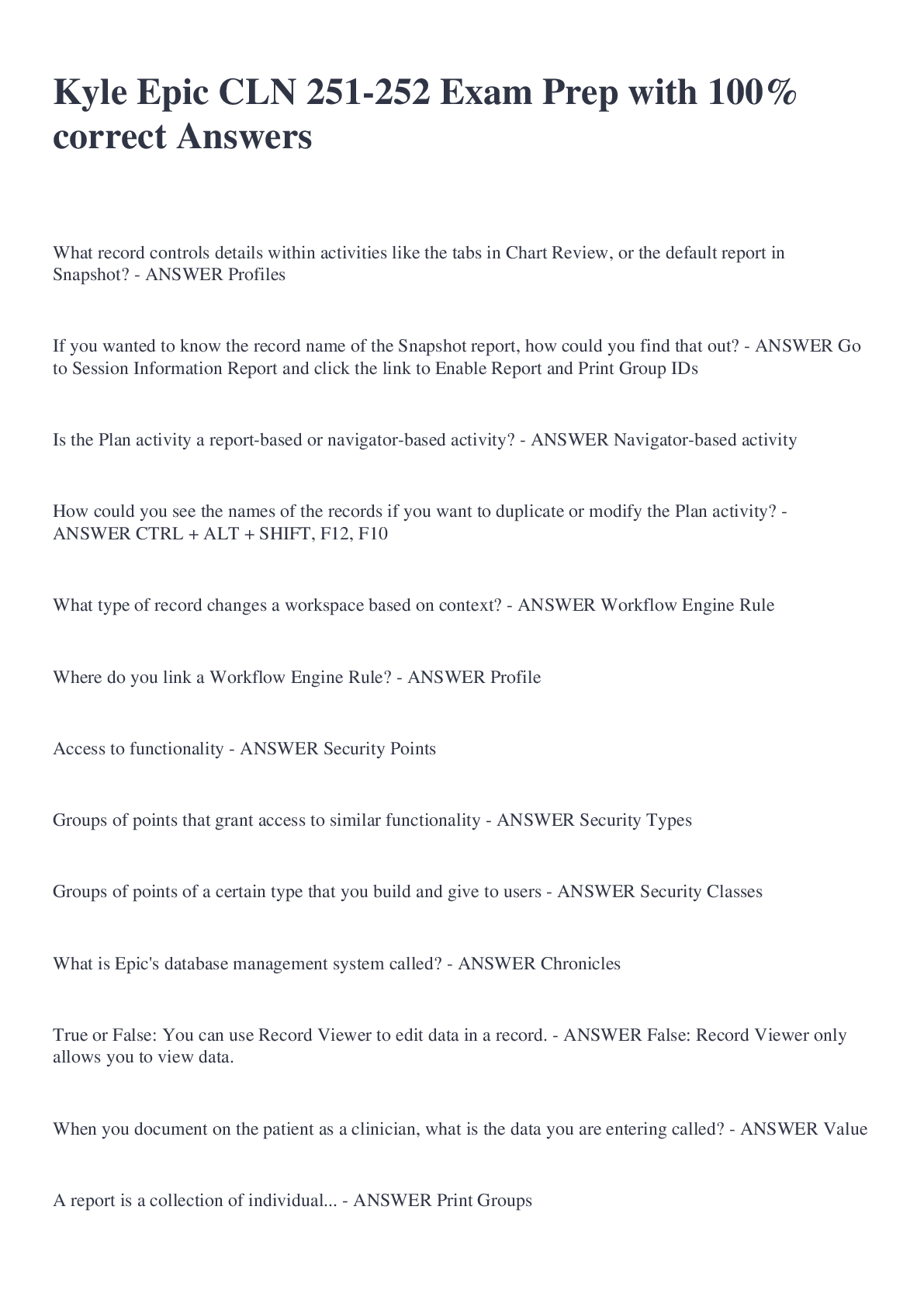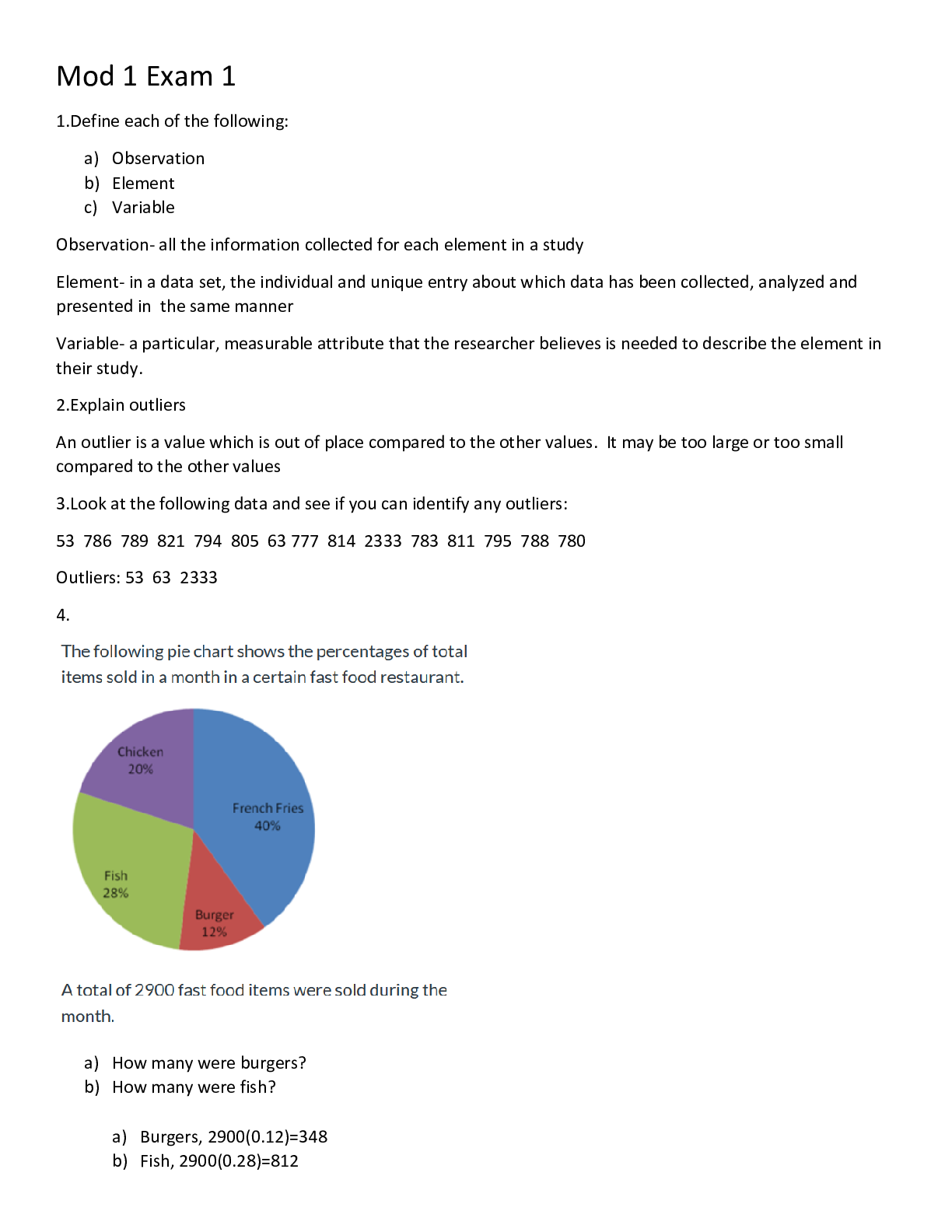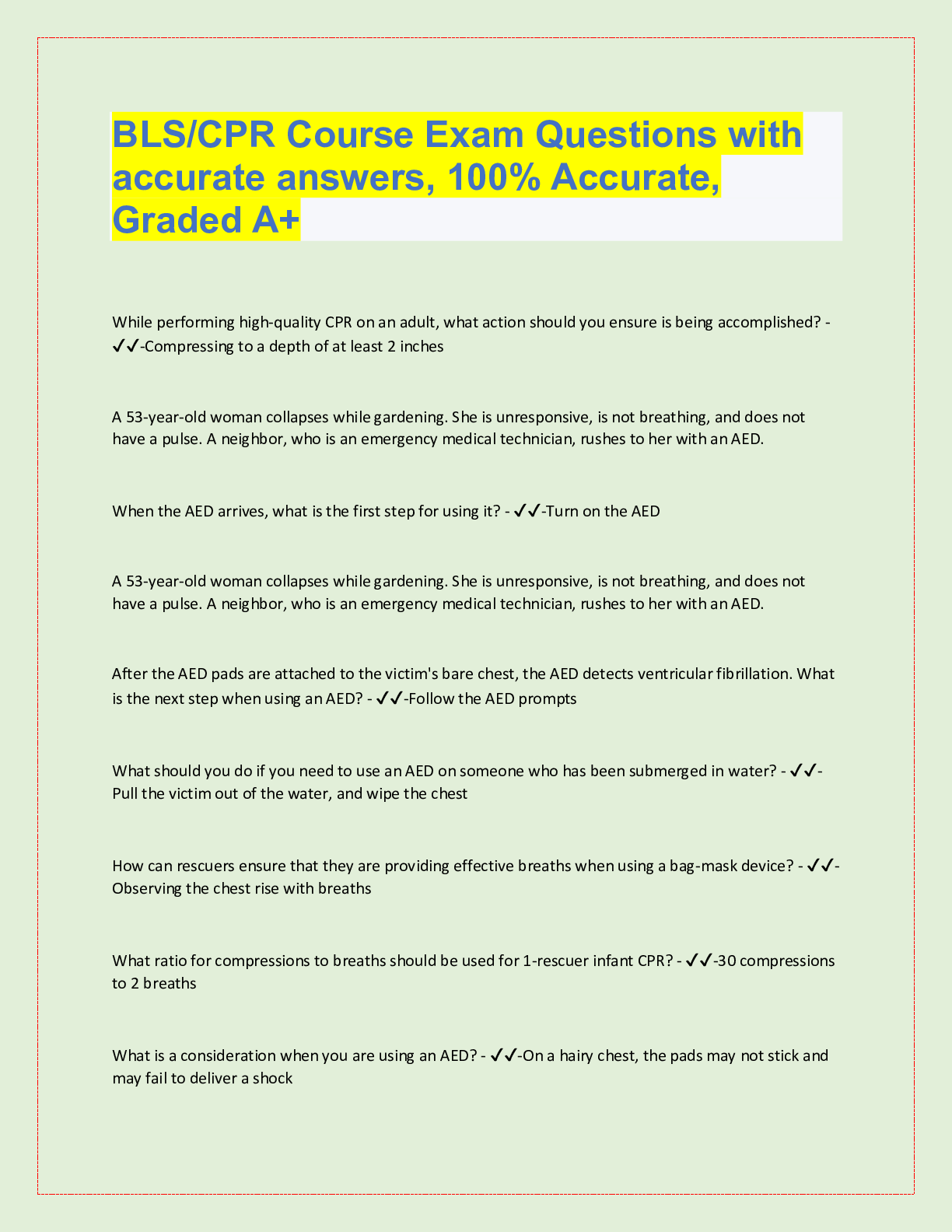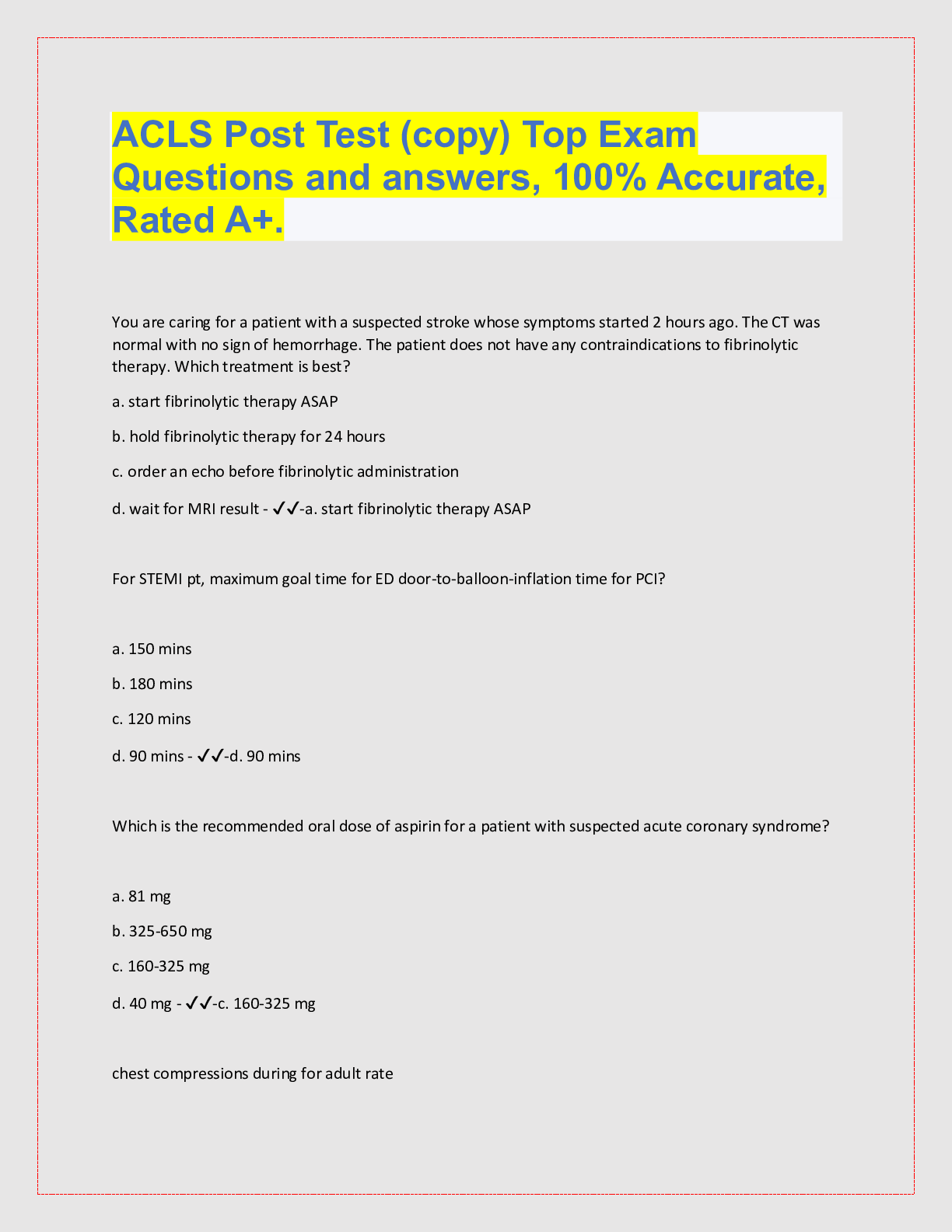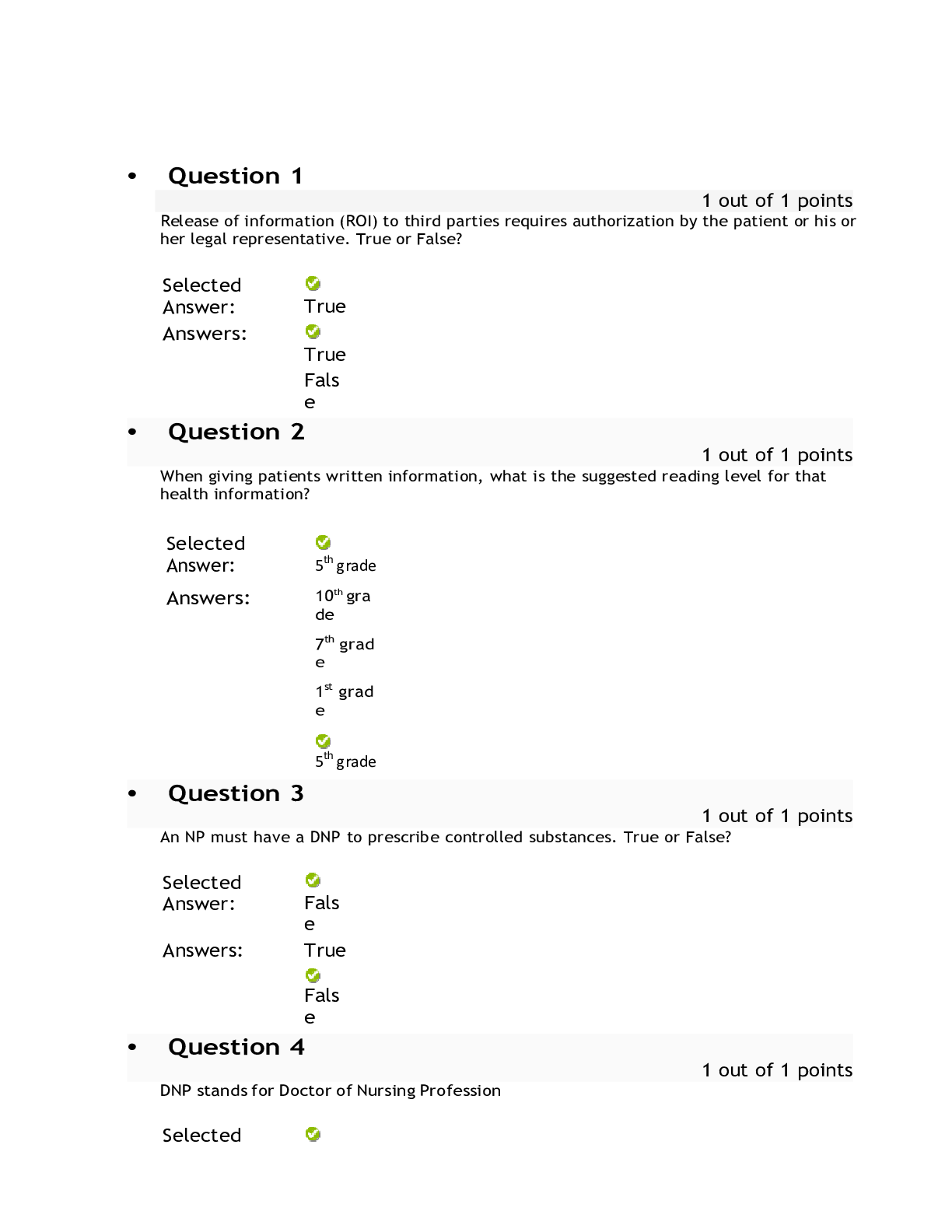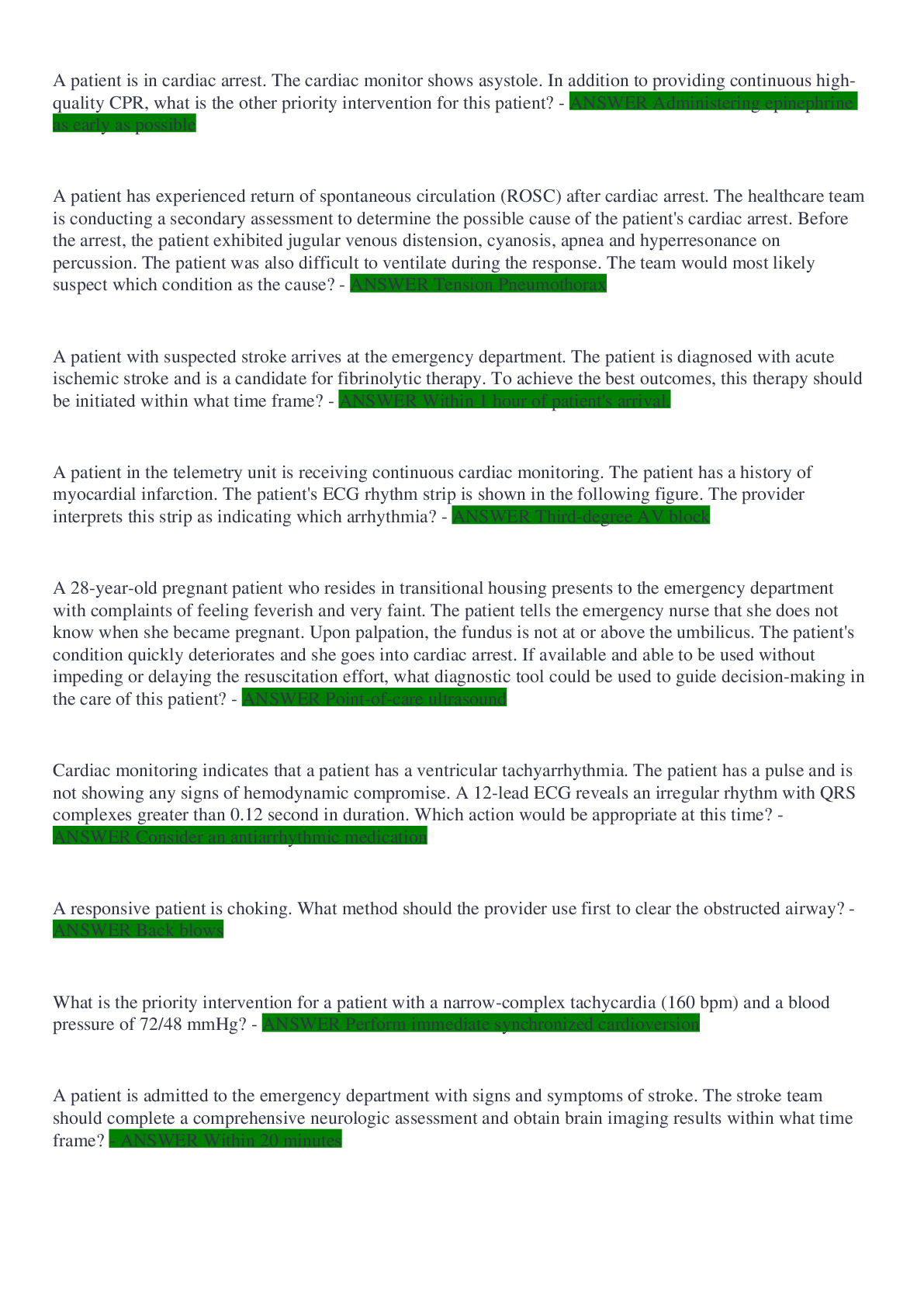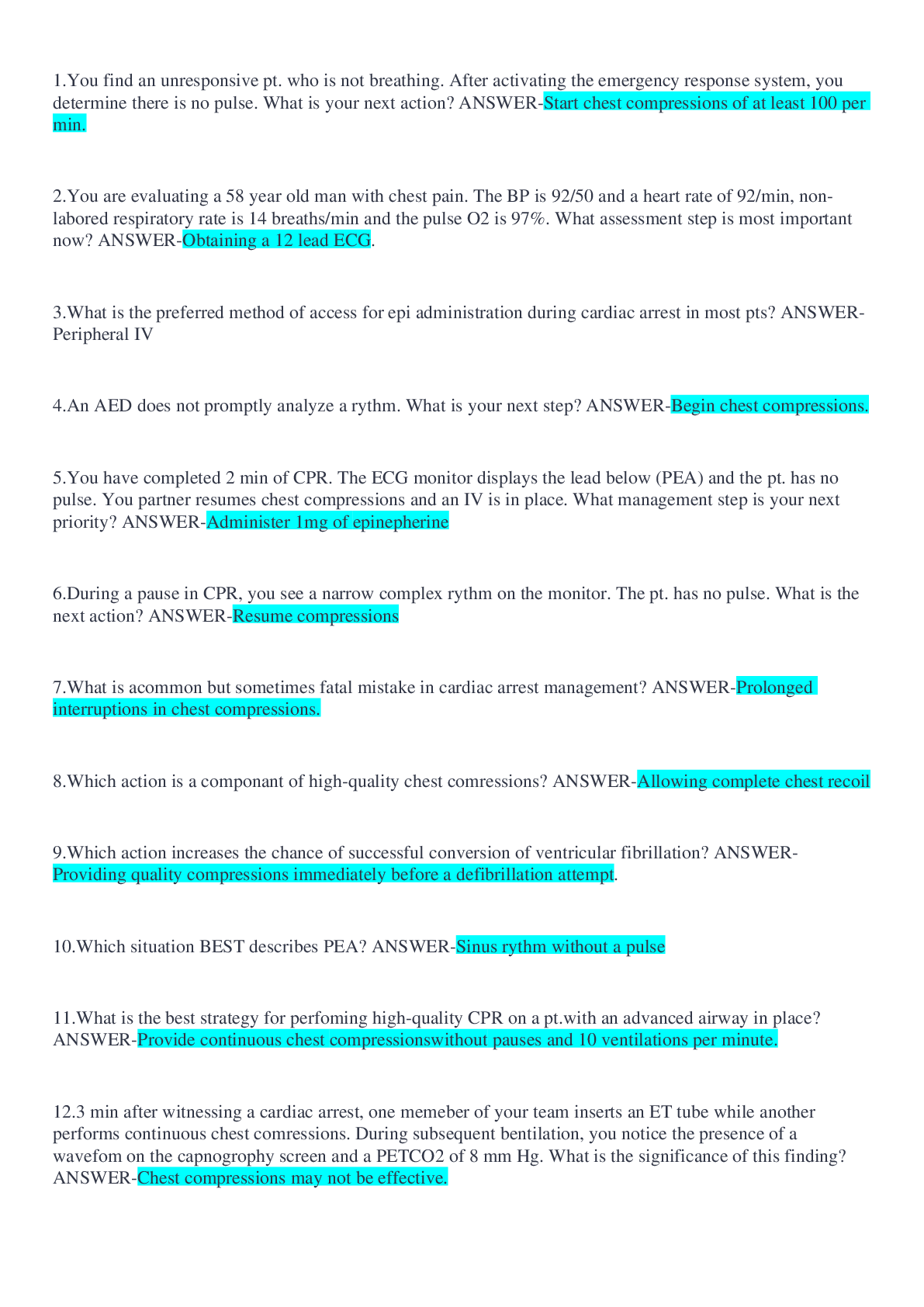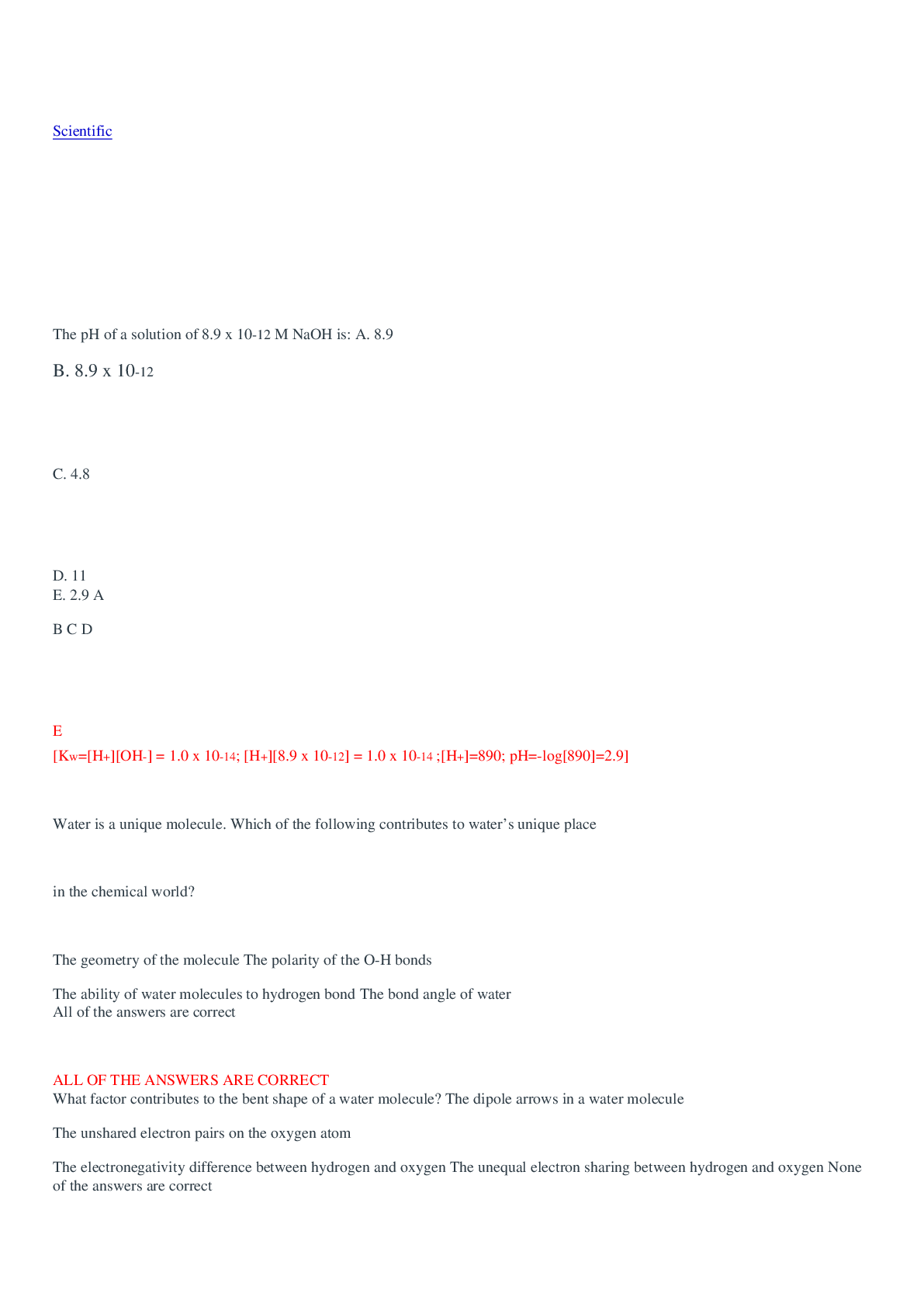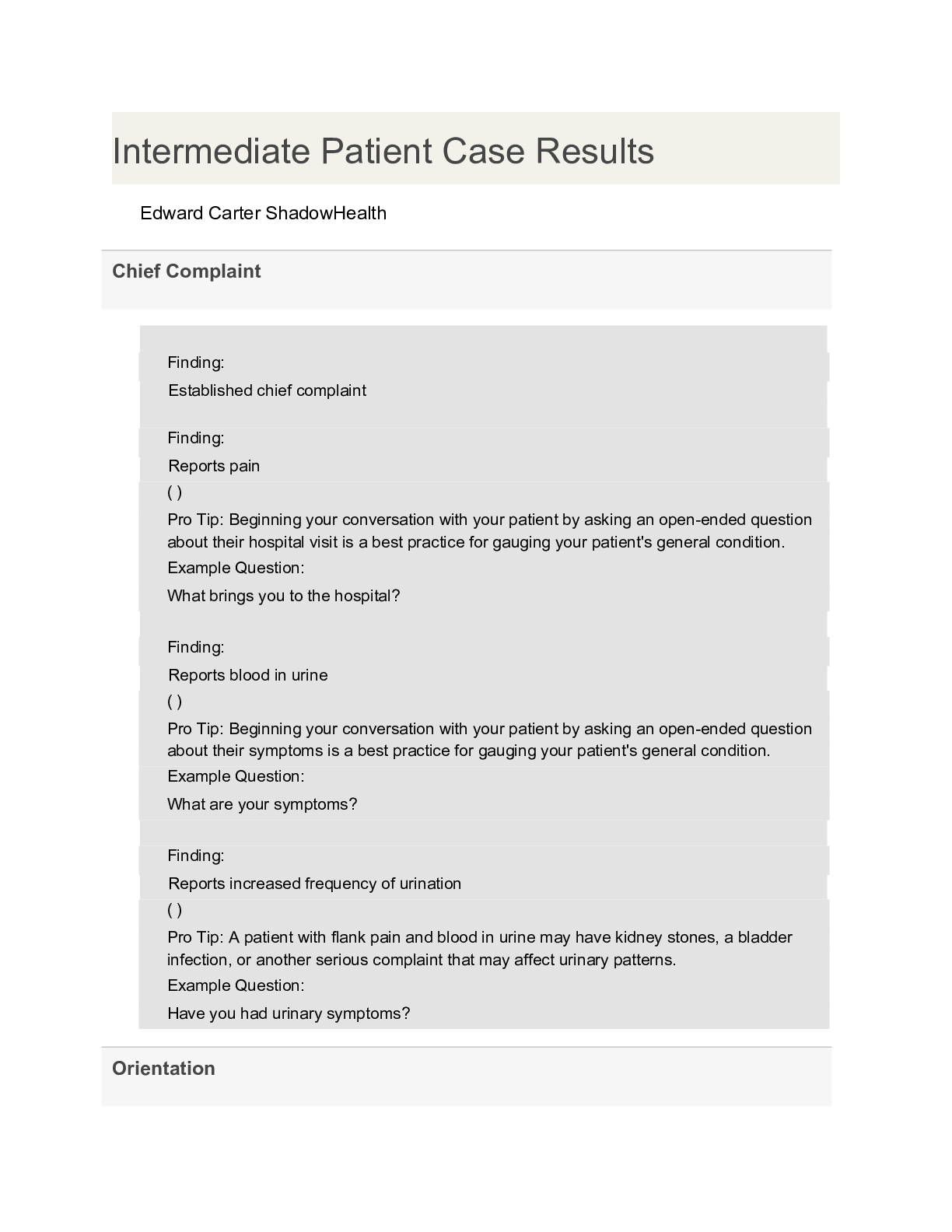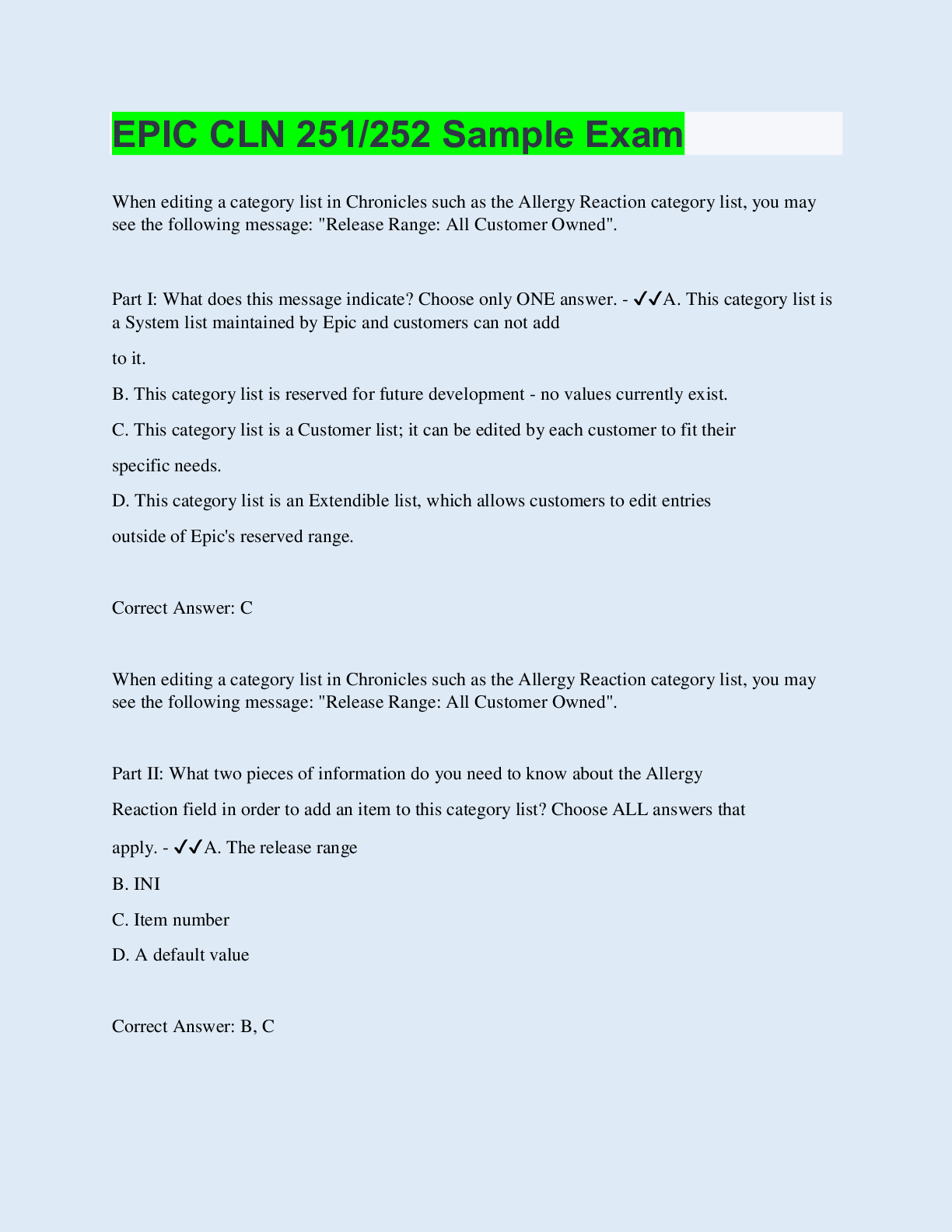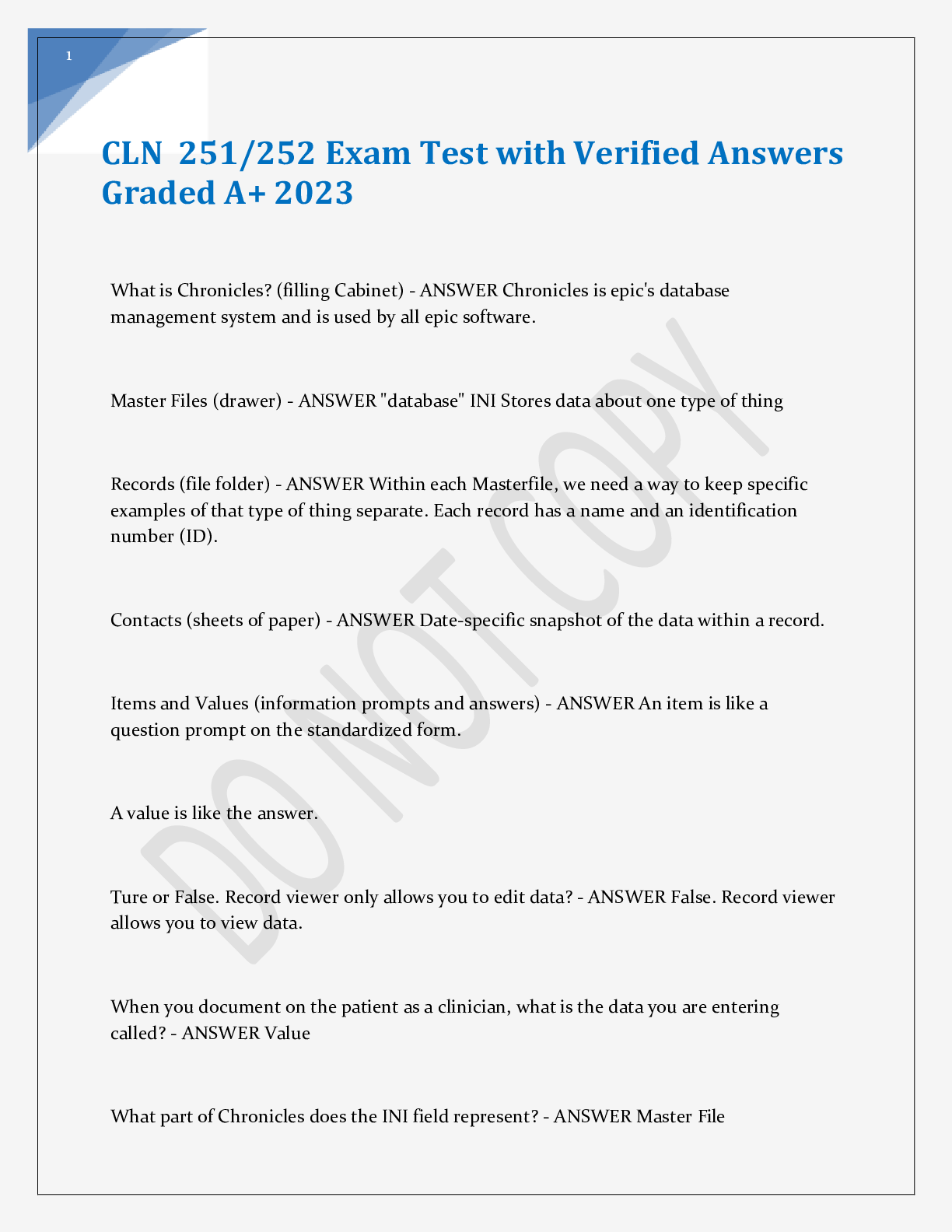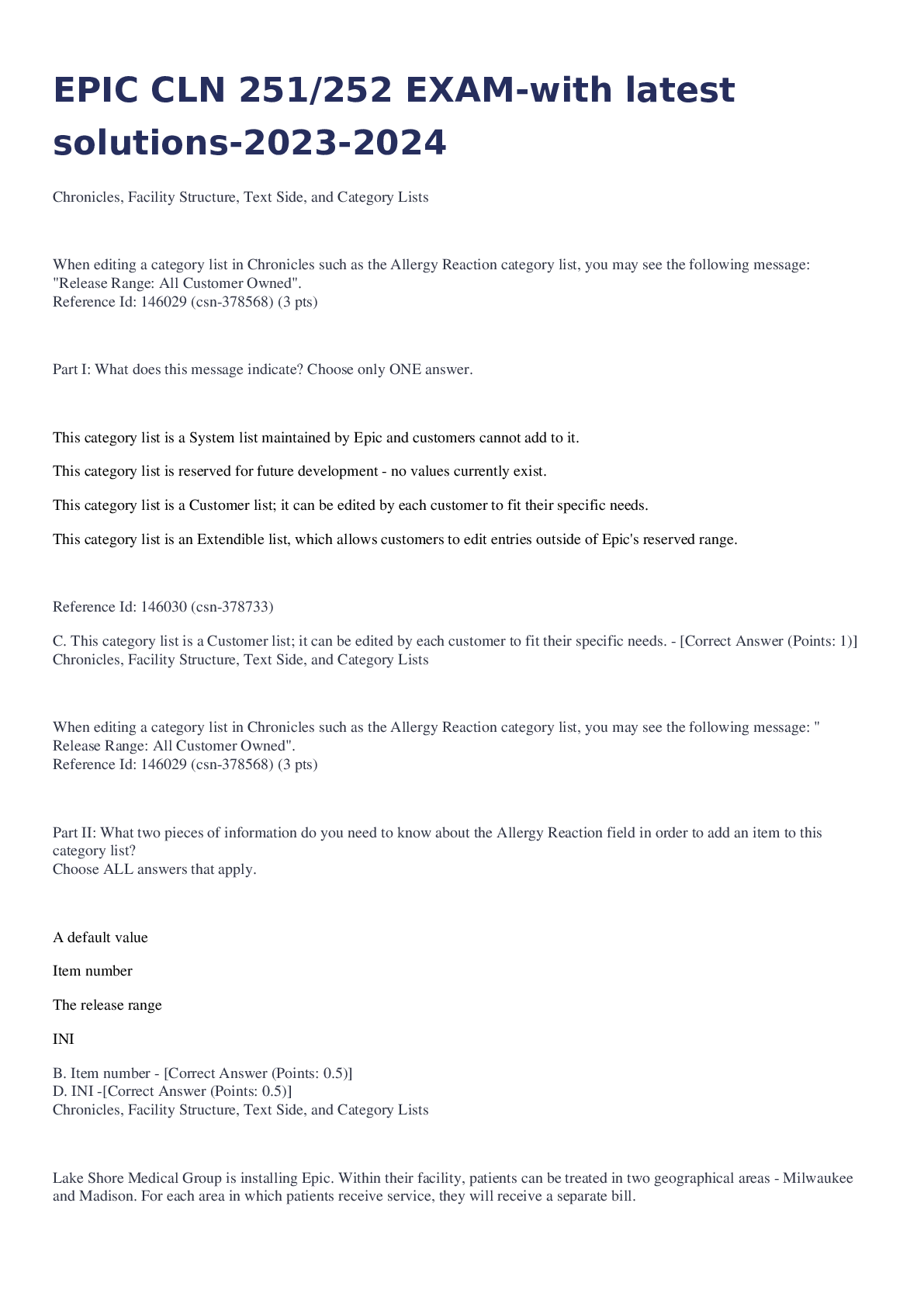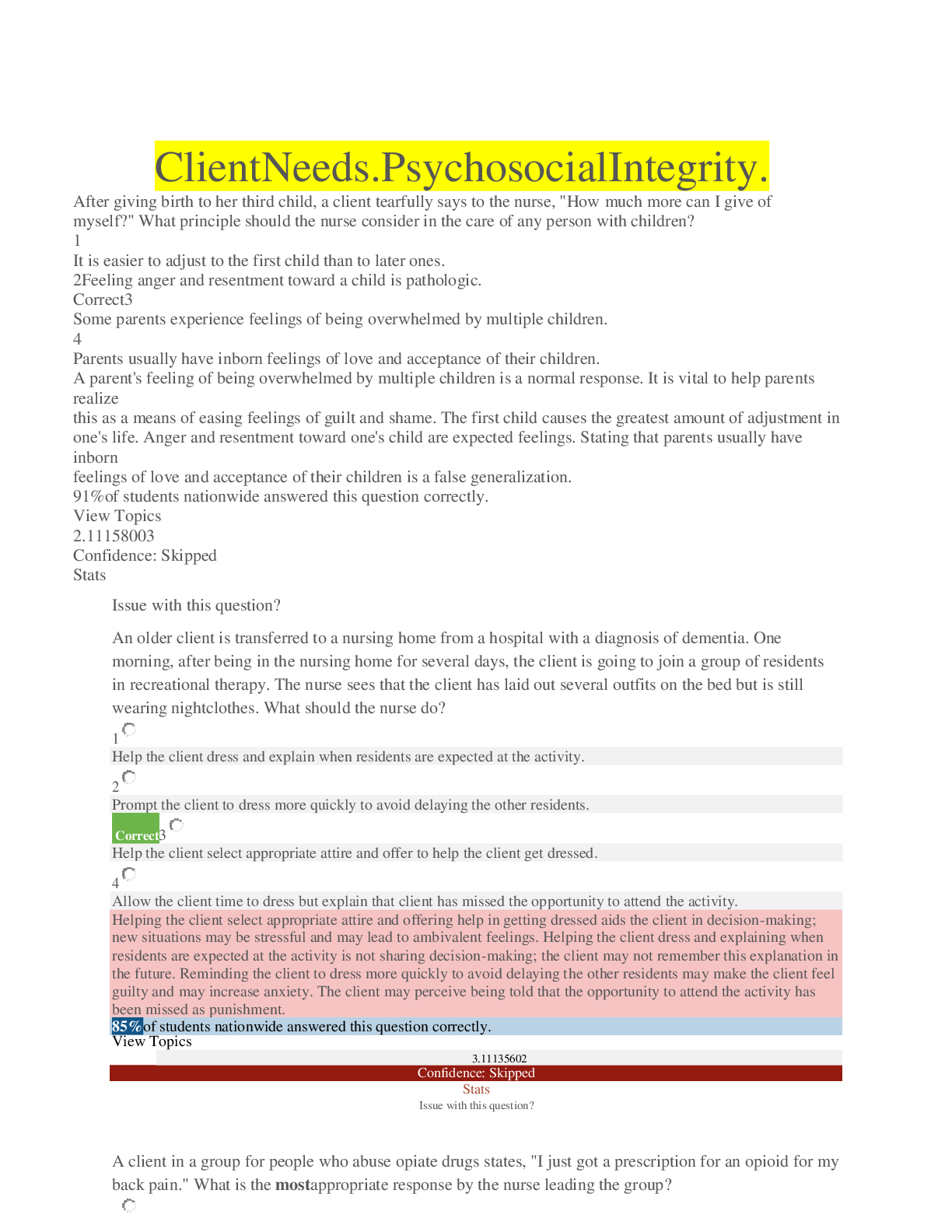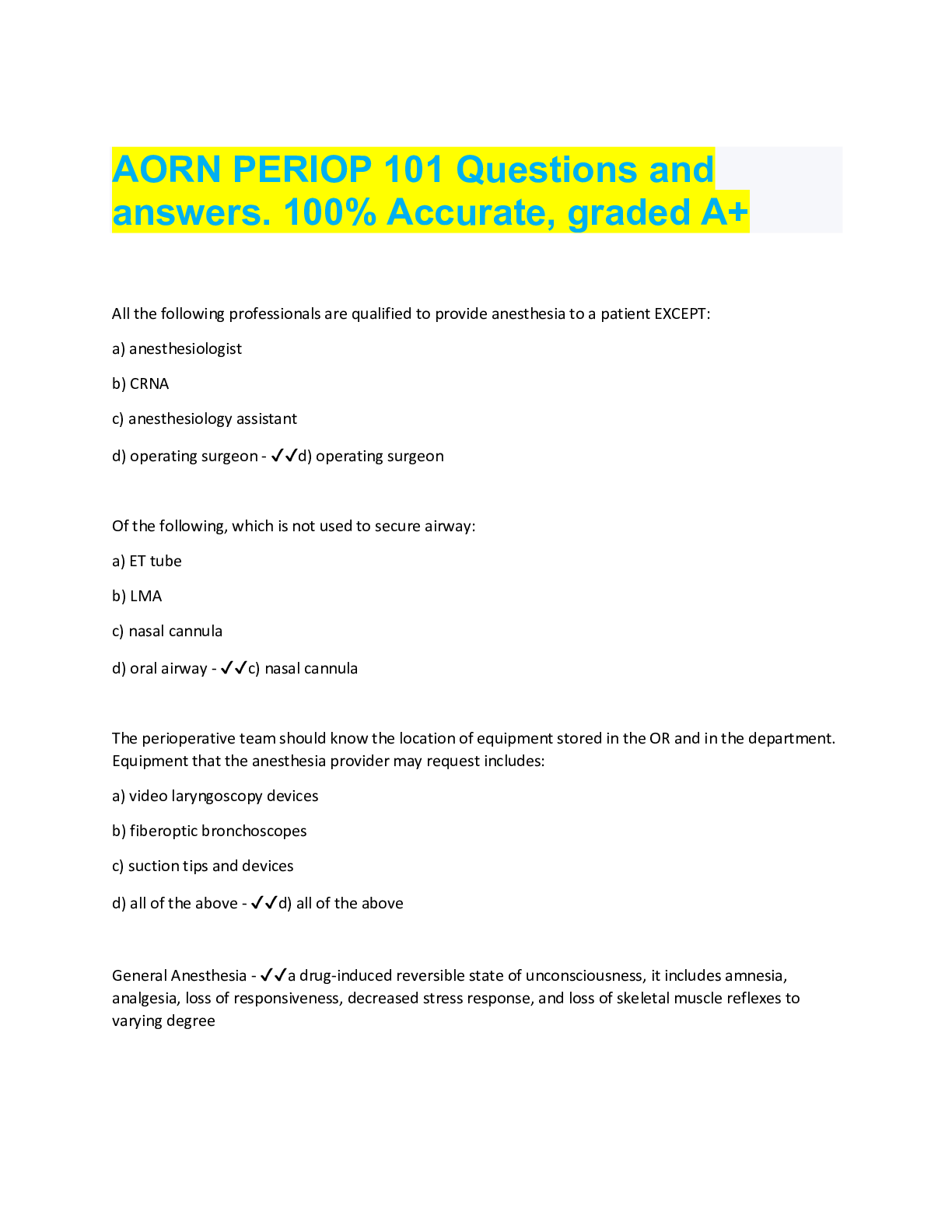Military Studies > EXAM > Simulation Course (S7) Exam Graded A+ (All)
Simulation Course (S7) Exam Graded A+
Document Content and Description Below
Which of the following does the GCCS-A provide as one of its services? - ANSWER operational information from the Global Command and Control System Joint (GCCS-J) to Army theater elements and below ... The Tactical Mission Command Work Station (TMC-WS) provides collaborative, executive decision-making capabilities to the Army using which of the following? - ANSWER Common Operational Picture (COP) management Currently enemy forces have been detected, and are approaching your brigades sector. You must quickly locate the enemy before formulating an offensive or defensive strategy for the impending contact with the opposing force. You are in need of a system that specifically acquires data from the Army, joint, national, and allied sensors and sources to provide intelligence on the battlefield across multiple security levels. Which of the following systems would prove most helpful in this situation? - ANSWER Distributed Common Ground System-Army (DCGS-A) A Soldier is about to be deployed to a classified location. After the Soldiers are transported via aircraft, they will have to travel along a small, dangerous road that is close to enemy lines. This particular road is notorious for hosting improvised explosive devices (IEDs). Which system should be used to monitor the road as the Soldiers make their way to the specified location? - ANSWER Combined Information Data Network Exchange (CIDNE) Your commanding officer notices that a minor miscommunication may have been made between two different mission command information systems. You are tasked with ensuring that successful communication between different MCIS is made from now on through the provision of a stand-alone network for both the Secure Internet Protocol Router (SIPR) and Non-Classified Internet Protocol Router (NIPR). Which of the following networks will prove most helpful to you when carrying out this order? - ANSWER Warfighter Information Network-Tactical (WIN-T) You are the operations officer of a military unit that is establishing a training framework under a limited training budget. Your unit also has a limited number of personnel at its disposal. Which type of interoperability would prove most effective in helping you establish a training framework for your unit with limited resources in this situation? - ANSWER MCIS and simulation interoperability You are tasked by your commanding officer to create and send DIS messages, ensuring that communication is being maintained between distributed simulations and simulators. After developing a software interface, you translate all position data to WGS-84. How were you able to translate the position data? - ANSWER All of the above You observe several different types of information and events that are passed from simulation to simulation within high level architecture (HLA). You categorize these different types of information and events into three separate categories. What would you categorize named datums as that reveal different levels of capabilities each time an interaction is sent? - ANSWER Parameters Which of the following is not mentioned as an HLA rule concerning federations? - ANSWER During a federation execution, federations shall interact with FOM data owned by only one federate at any given time. The presentation layer in the OSI Seven-Layer Model transforms data into an acceptable format to be received by the final layer. Which of the following statements is the presentation layer also responsible for? - ANSWER Encrypting and decrypting the syntax layer when necessary You are tasked by your commanding officer to construct a simulated battlefield scenario for training all fires and close air support tasks. Which of the following virtual simulators would be most applicable for this type of training? - ANSWER Call for Fire Training (CFFT) The operations officer of a military unit is developing unit training objectives for a training exercise. Training objectives are to identify which of the following? - ANSWER Where You are a Soldier participating in a non-system training aid, device, simulator, and simulation (TADSS) that provides realistic mission command training through the presentation of Joint and Army Intelligence capabilities. This non-system TADSS is specifically used for training the Intelligence Warfighting Function (WfF). Which of the following are you participating in? - ANSWER The Intelligence Electronic Warfare Tactical Proficiency Trainer (IEWTPT) The Protection WfF is using a non-system TADSS to train in operations that involve ensuring pathways are cleared and safe for a unit to traverse. Which of the following simulators is the Protection WfF using? - ANSWER Virtual Route Clearance Trainer (VRCT) A Soldier asks you what the difference is between system and non-system training aids, devices, simulators, and simulations (TADSS). In response, you begin describing each type of TADSS. Which of the following traits you list applies to both system and non-system TADSS? - ANSWER Procured by the Program Executive Office for Simulation, Training, and Instrumentation (PEO-STRI) In preparation for deployment, a unit is identifying critical tasks that must be performed. The unit commander states that these tasks consist of moving the unit to the assembly area and conducting river crossing operations. By identifying these mission-essential tasks, or METs, the unit will determine the training they will undergo in order to fulfill these tasks. In response to the unit commanders mission-essential task list, or METL, the unit is conducting mobility training, which includes physical readiness training. Which of the following training systems is being implemented in this situation? - ANSWER Unit Training Management (UTM) Model A unit is listening to the unit commander lecture about the evolution of force generation processes and the ways the Army employs sustainable readiness to generate units to handle known operational plans, or OPLANS. During this discussion, the commander mentions the four-tiered T-level rating system. This assessment is based on the units ability to do which of the following? - ANSWER Accomplish mission-essential tasks (METs) A deployed unit is conducting inspection and maintenance of equipment and personnel to ensure all assets are well taken care of. After concluding their inspection, the unit reviews insights on how to accomplish the next events goals more effectively. Which phase of the Unit Training Management, or UTM, four-phase training development methodology is currently being conducted? - ANSWER Phase Four Assess A deployed NCO is reviewing the different types of mission training complexes, or MTCs. He is specifically searching for a capability that supports both school instruction programs and operational unit requirements. Which of the following MTC plans should he use? - ANSWER Hybrid MTC While determining the mission-essential tasks, or METS, for the upcoming mission, the unit commander realizes that he requires the training evaluation outlines, or TEOs, to be most effective during planning. Which device should the commander implement in order to quickly acquire this information? - ANSWER Army Training Network (ATN) METL Viewer A unit commander is attempting to determine which type of training from the training readiness paradigm will be applicable to his current situation. Currently, those requiring training are at the MC staff level, and must be instructed on critical intra-CP element staff control processes. Which type of training must be implemented? - ANSWER Walk training type from the training readiness paradigm. A Soldier is operating the LVC-Integrated Architecture, or LVC-IA, Increment 1. Of the core enablers planned for LCV-IA Increment 1, which should be implemented for live training? - ANSWER Home Station Instrumentation Training (HITS) A unit commander is attempting to assign a use case that best corresponds with the target training audience, training objectives, support requirements, LVC components, and MCIS to be stimulated. In this particular situation, the objective is to train personnel to conduct combat and stability and support operations focused against insurgents with or without higher command, or HICON. Which use case would be the most appropriate to implement with these needs in mind? - ANSWER Battalion (BN) Command Post Exercises (CPX) [Show More]
Last updated: 1 year ago
Preview 1 out of 6 pages

Reviews( 0 )
Document information
Connected school, study & course
About the document
Uploaded On
Nov 25, 2022
Number of pages
6
Written in
Additional information
This document has been written for:
Uploaded
Nov 25, 2022
Downloads
0
Views
45

